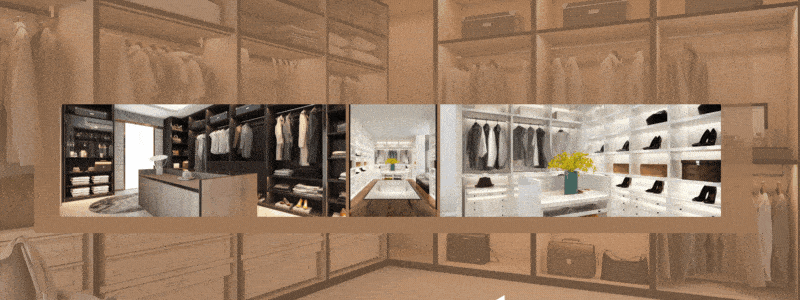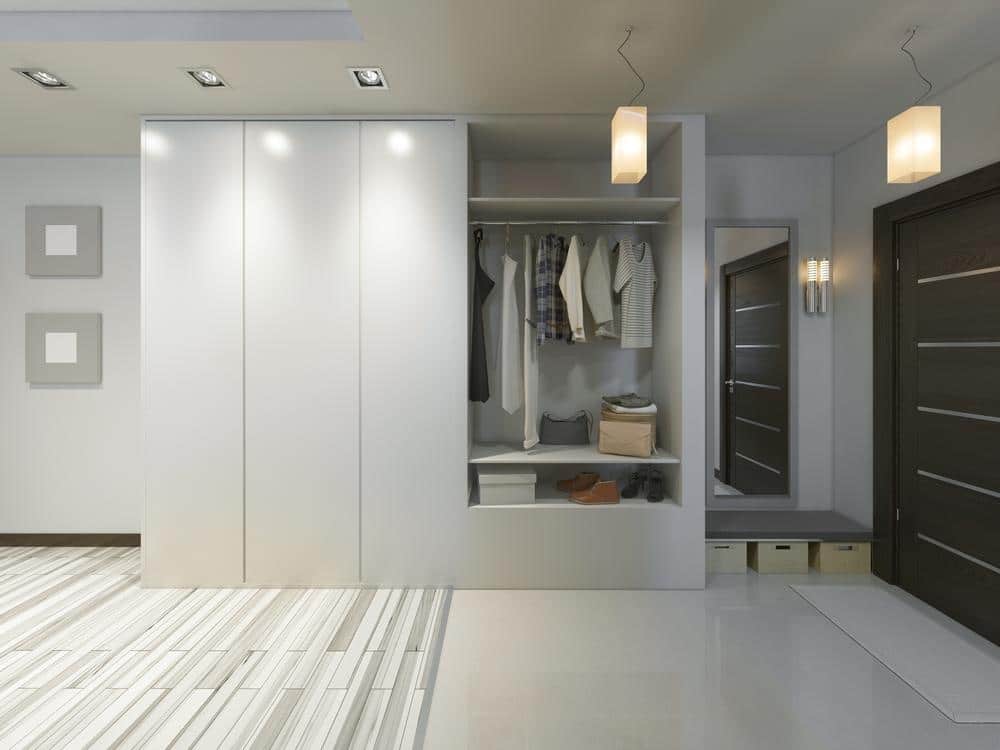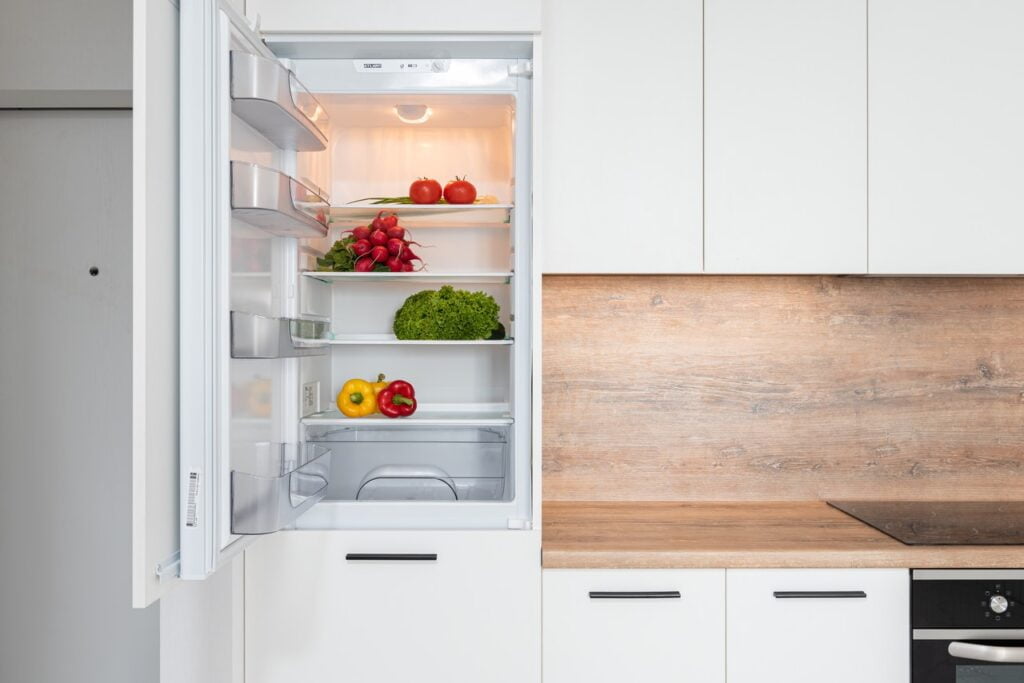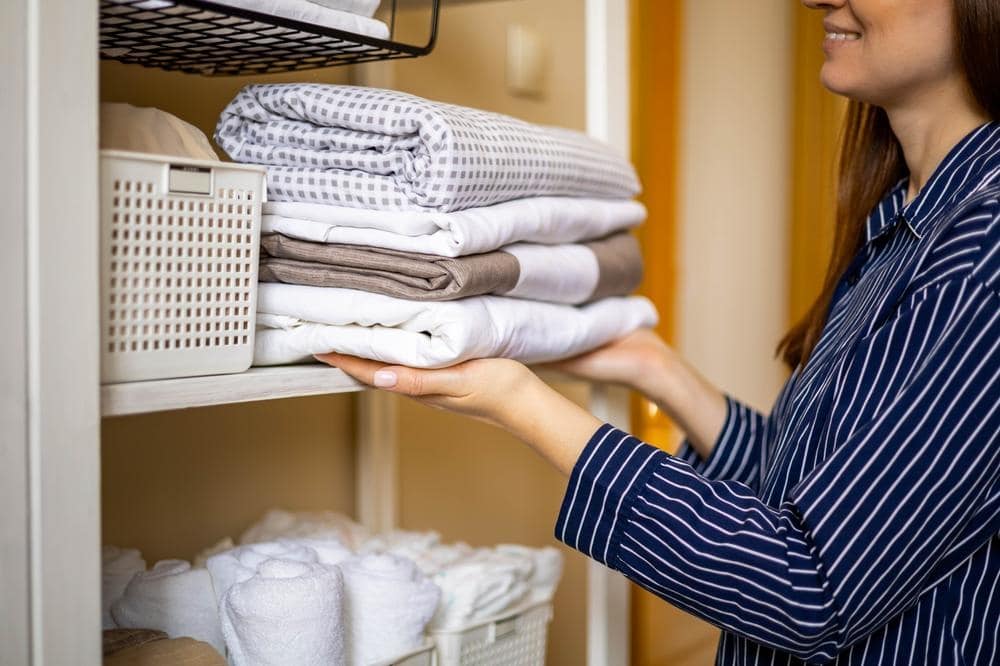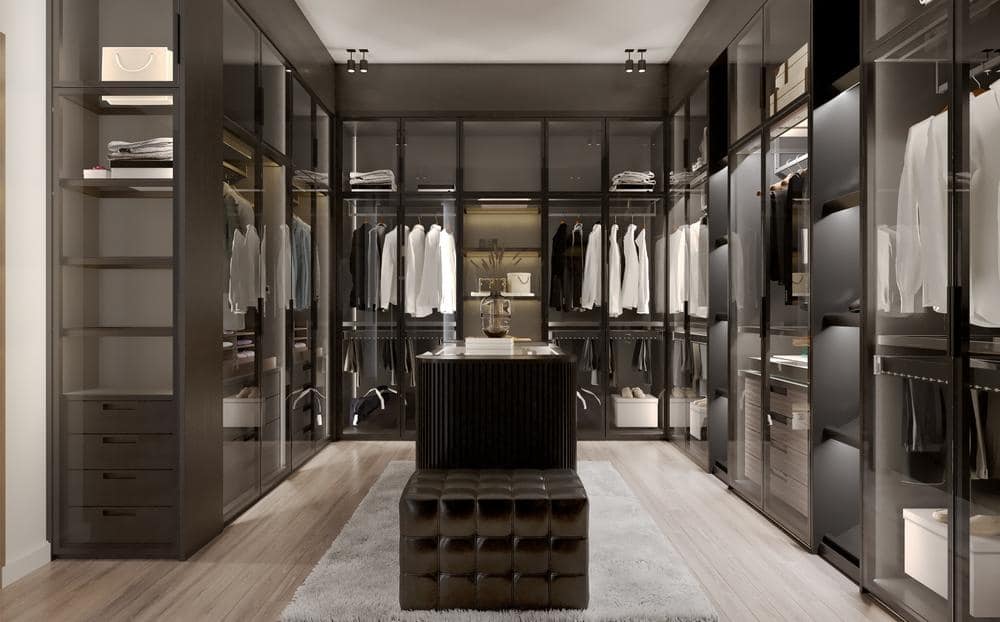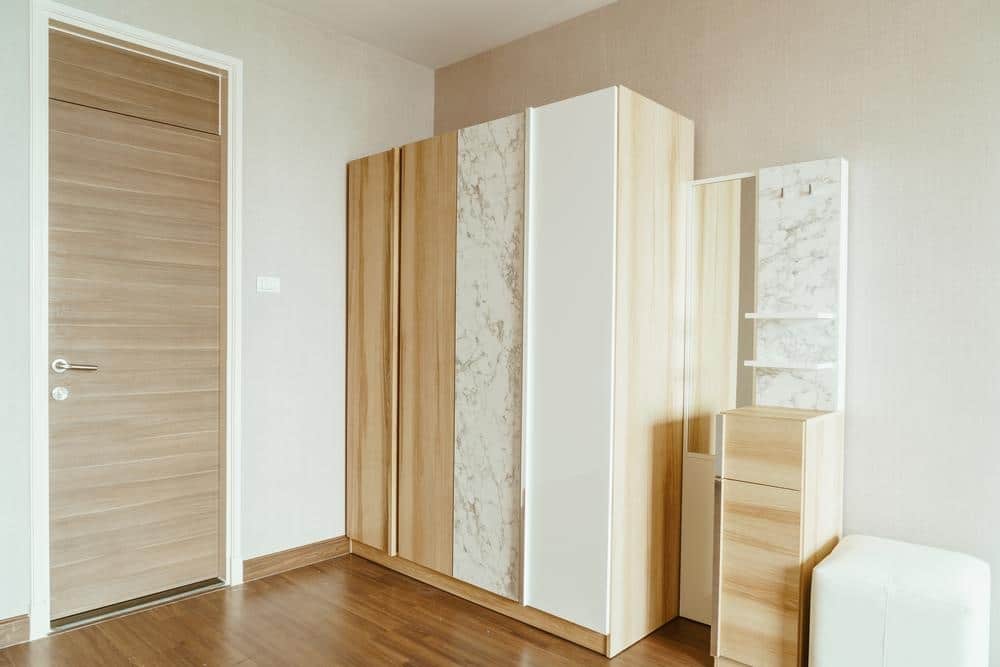Creating your own larder at home is a great way to take advantage of all the fresh, healthy ingredients that can be found in your local supermarket. Whether it’s a large space dedicated to your pantry essentials or simply a set of shelves that can be tucked away, adding a larder to your home can be an invaluable asset. Here are interesting and useful tips that can help you create your own larder.
Larders were traditionally used to keep foodstuffs fresher for more extended periods. Still, as suburban homes filled with trendy white goods in the 1950s and 1960s, larders (or pantries or cold rooms) were firmly extinguished, becoming dusty cupboards and dingy utility rooms full of sad old mops and pungent dog food.
Now that the country’s obsession with nostalgic cooking is in full swing, larders have resurfaced as a stylish, cost-effective storage option. We’ve gotten used to piling everything we buy into the fridge because we’re afraid of expiration dates, but this only results in a smelly, messy space where food mixes or molds.
Fortunately, it doesn’t take much to build your larder; you only need ambition and the confidence to keep some foods out of the fridge. So, do as your grandmother would have done and stock your pantry with a mix of dry and fresh goods. This will result in a space full of possibilities, snacks, meals, and memories.
Creating an effective larder can be a challenging but rewarding process. By keeping these 9 helpful tips in mind, you can easily create a larder that is both practical and visually pleasing. With the right planning, design, and materials, you can quickly transform your kitchen and provide the convenience of having a fully functional larder.

Utilize Space with Larder
Table of Contents
- Utilize Space with Larder
- Ideal Place for Larder
- Install a Breakfast Cupboard for Larder
- Make It Freestanding for the Larder
- Create Your Own Larder With an Open Shelving for Display
- Adapt Your Base Units for Larder
- Opt for Bi-fold Doors for the Larder
- Utilize Smart Larder Organization Ideas
- Opt for Pull-out Drawers at the Larder
- How do you make a cold larder?
- What should be in a larder?
- How cold should a larder be?
- What is the difference between a larder and a pantry?
- What is a wet larder?
- What is a dry larder?
- How do you arrange a larder cupboard?
- What makes a good larder?
- How do you make a larder room?
- How big should a larder be?
- Are larder cupboards worth it?
- What do you put in a pull-out larder?
- What is a larder box?
- Why is it called a larder?
- How do you keep a larder cool?
- How wide is a larder cupboard?
- What is cold larder?
- Is a refrigerator a larder?
- What is the difference between a pantry and a larder?
- How do you lay out a larder?
- What is the difference between a larder and Garde Manger?
- Does a larder need ventilation?
- What is a basic larder?
- What do British people call a pantry?
- How were larders kept cool?
- What is an English larder?
- What is a Butler’s larder?
- How do you make a larder?
- What is a larder?
- What do Americans call a larder?
- What does larder mean on a menu?

Walk-in larders have numerous advantages, including the ability to store wine exceptionally well. The most significant benefit, however, is space: converting a cupboard under the stairs or on the side of the kitchen into a pantry will provide you with an incredible amount of shelf space, freeing up your kitchen units for that ever-growing collection of plates, gadgets, and glasses.
Cramming in all your preserves, sauces, and tins may appear to be a clutter trap, but a well-organized larder works to remind you of everything you own. A pantry is similar to a walk-in closet for your food: with enough space to display and organize your spices, jams, and grains, you can see everything you own and plan your meals much more effectively.
A thoroughly cold larder, such as one in an insulated shed, can be used in winter to keep milk and meat products properly chilled, if not frozen—ideal for a Christmas feast. For the economically and environmentally conscious, it is possible to turn off your fridge and rely solely on your pantry, as before the invention of white goods. You’ll need to reach a base temperature of 4°C (39F), which is doable but should be done with the assistance of a professional. You’ll save money by not running your refrigerator, which can cost up to 12p per hour and free up a lot of space in your kitchen.
Ideal Place for Larder
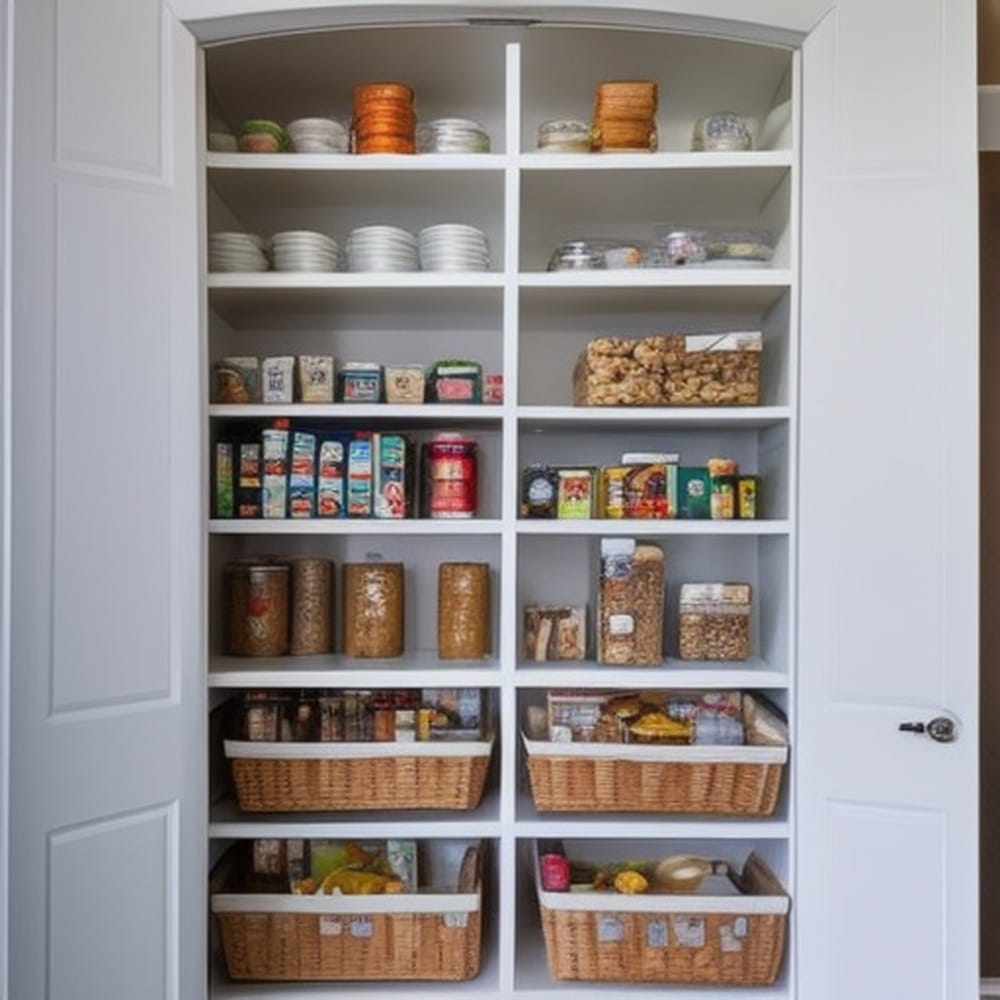
The ideal larder should be located on the north side of your property to reduce the amount of heat from the sun. Look for cabinets under stairs, along the side of kitchens, or near garages. One of the pantry walls should be an exterior wall of your home. If you don’t, your pantry will likely heat up with the rest of your house. Remove carpet, wood, and insulation – anything that will retain heat – to keep it cool and stable on the inside. The best option is to have bare stone or brick floors and walls, with a door to keep the coolness from leaking.
Shelving is also essential. Consider covering the walls and floors with a large slab of marble, granite, or even slate if you purchase a large slab. Though more expensive than wood, stone, such as marble, is naturally more relaxed and will help to keep the overall temperature down.
Another critical method of lowering temperature is ventilation. This may be a small, north-facing window. Removing a brick from two different walls or at two different heights will create a draft, but these, as well as any windows, should be covered with dark netting to keep sunlight, critters, and rodents away from your food. To prevent freezing, any vents must be completely closed in the winter.
For the jar-obsessed, larders are heaven. Fill your pantry once you’ve built it. Remove all plastic packaging and place it in glass: the result is a beautiful, gleaming, modern, and classical aesthetic. This also serves a purpose: jars keep food tightly sealed, so whatever’s inside doesn’t start affecting the taste and smell of other food nearby, as it would in a fridge. Paper is preferable to plastic for cheeses and preserved meats. Finally, hanging hooks are essential for drying out meats, mushrooms, and even some fruits and vegetables for the true foodie.
Install a Breakfast Cupboard for Larder
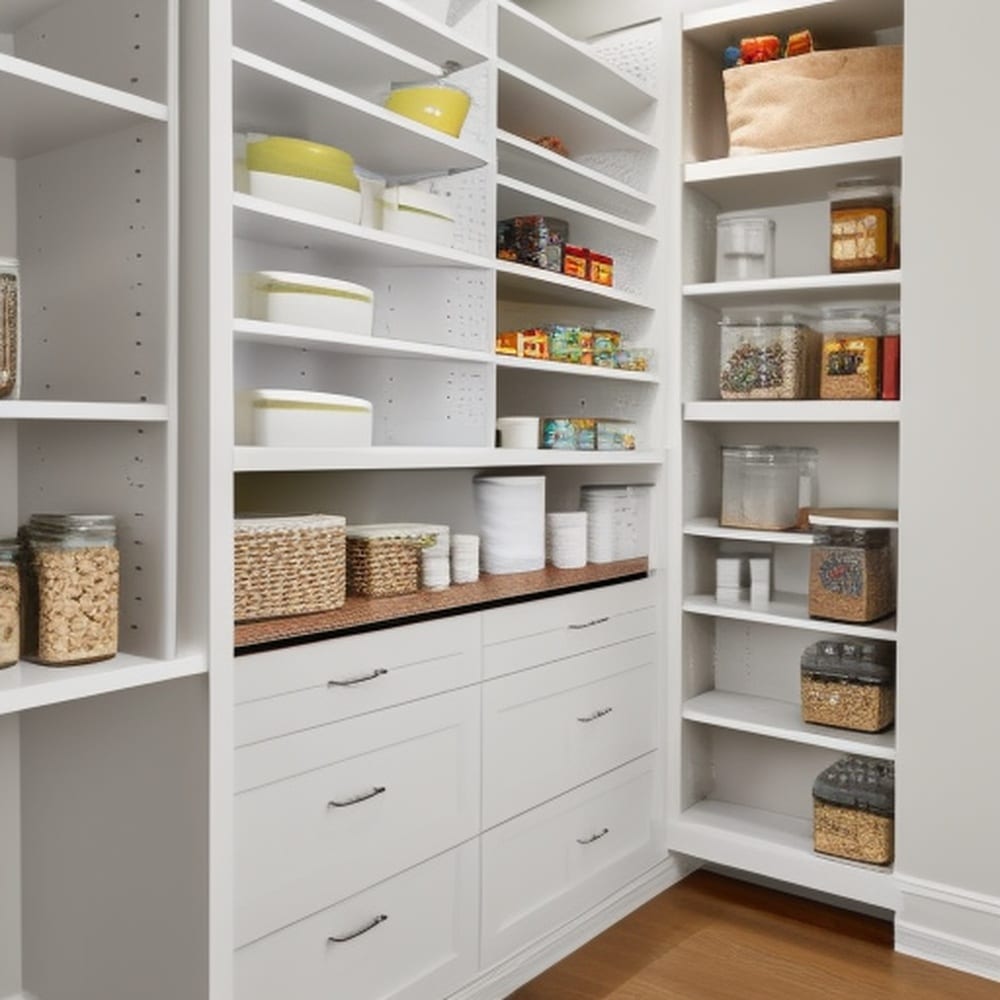
It’s great to have the option of building one into your cabinetry, giving you increased space and accessible access without having all those bottles cluttering up valuable countertop real estate! With this style, there are no worries about where things go because everything has its spot – whether at ground level or sitting on shelves high above head height (perfect if pantry organization isn’t an issue). You can also easily incorporate plug sockets within larders, so nothing goes missing during power cuts; plus, they’re perfect places as always…to store appliances such as coffee machines.
Make It Freestanding for the Larder
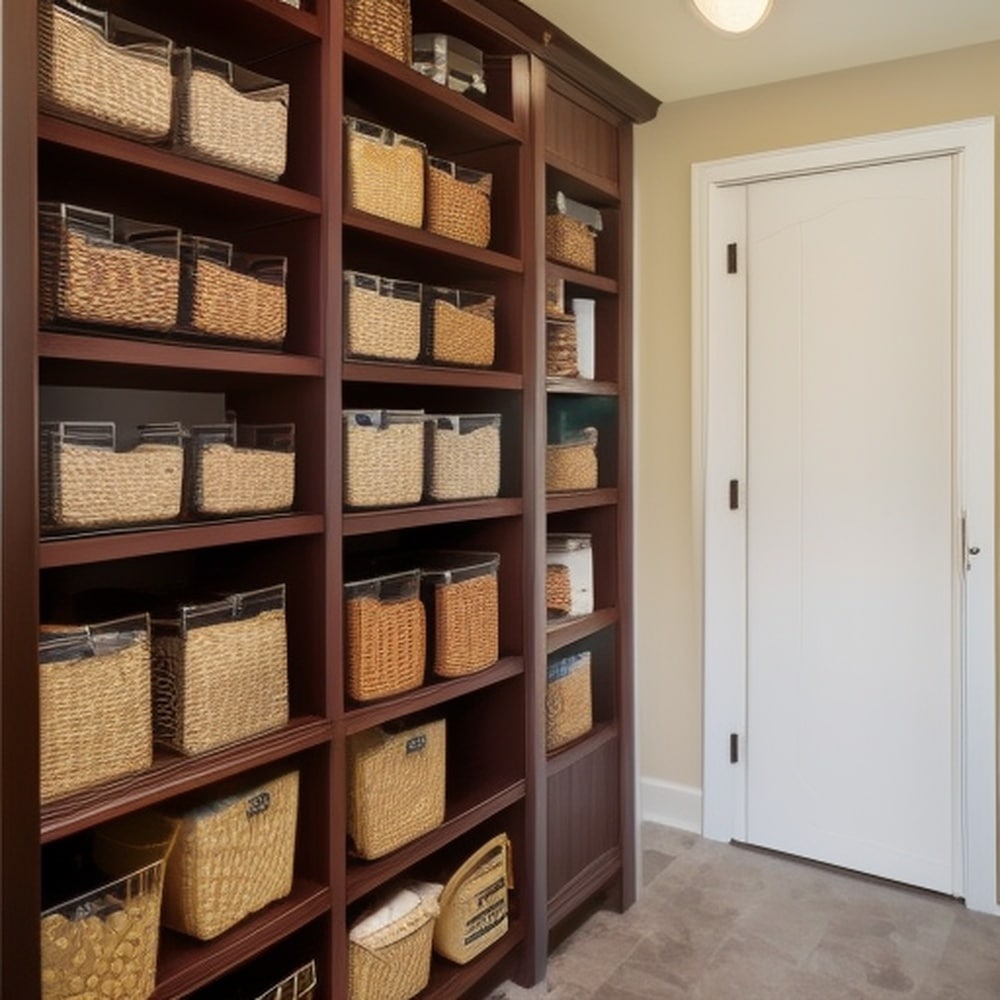
The standalone larder is a great way to use your spare space. This dedicated area can be customized with features like full-height shelving for taller items, pull-out racks for spices or drawers, and wicker baskets of fresh produce – making them practical and aesthetically pleasing! You could go in pastel mint green if you want something different from what’s already installed, among other things…
Create Your Own Larder With an Open Shelving for Display
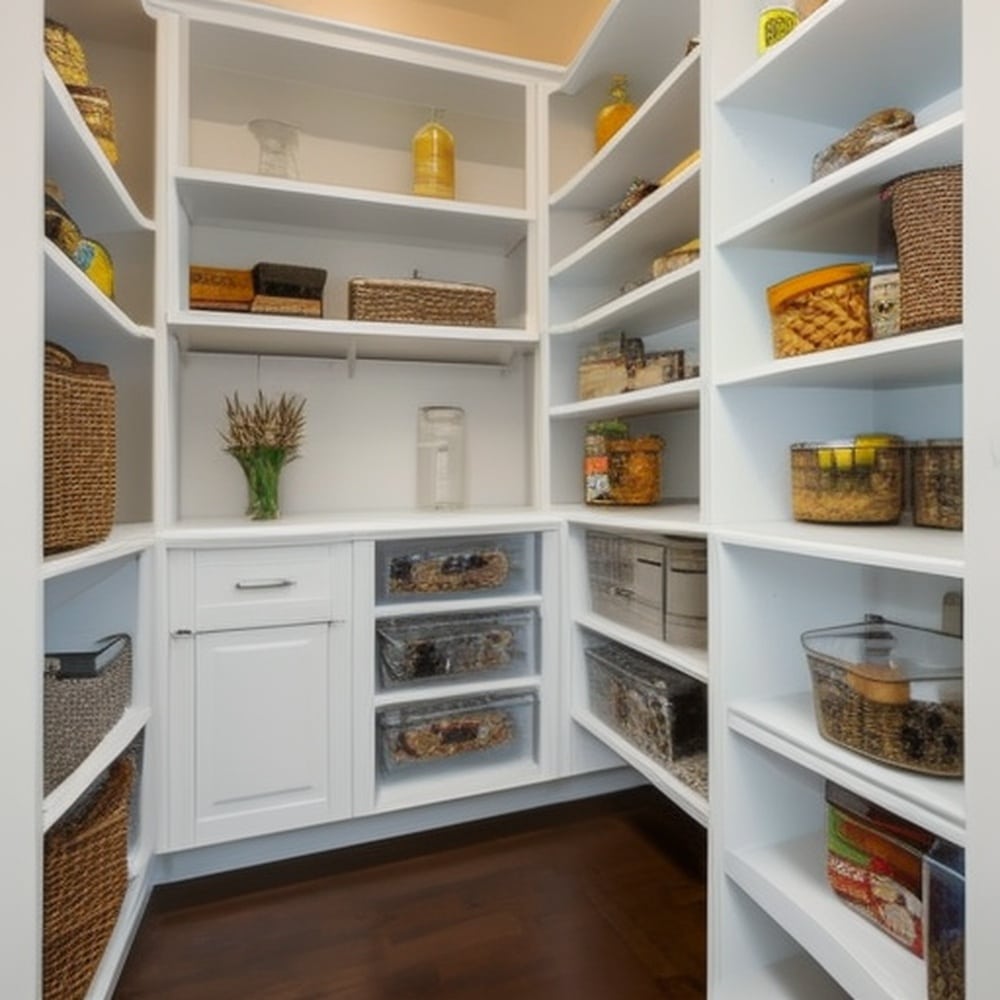
Exposed storage is a great way to show off your favorite items and make friends feel right at home. It’s also practical for use in spaces with limited ceiling height because you can add color by displaying crockery or glassware alongside dinnerware without worrying about making too much of an impression on the eye.
For example: if there are no high shelves within reachable distance, then open shelving will allow these critical pieces to lighten up any room while adding interest through their variety.
Adapt Your Base Units for Larder

With pull-out additions, you can benefit from a larder without completely overhauling your kitchen. Great for compact spaces and easily incorporate racks into cupboards that aren’t used to their maximum practicality – many brands will allow customization, so I would suggest having deep drawers as well! But this all depends on what kind of organizing needs are necessary for one’s household. We know some people who need more storage than others do; it boils down to personal preference when making these decisions together with one’s spouse (or significant other).
Opt for Bi-fold Doors for the Larder

If you need to store food items in your home, go for a built-in or freestanding larder with partially closed doors. This style also takes up less space than traditional designs because they don’t swing out as much and maximize usability by keeping them open when not storing anything inside! Bi-folding door will allow passage without blocking any routes while maintaining decorum – perfect if there’s one near an area where people walk through regularly, like near entryways (or bedrooms!).
Utilize Smart Larder Organization Ideas
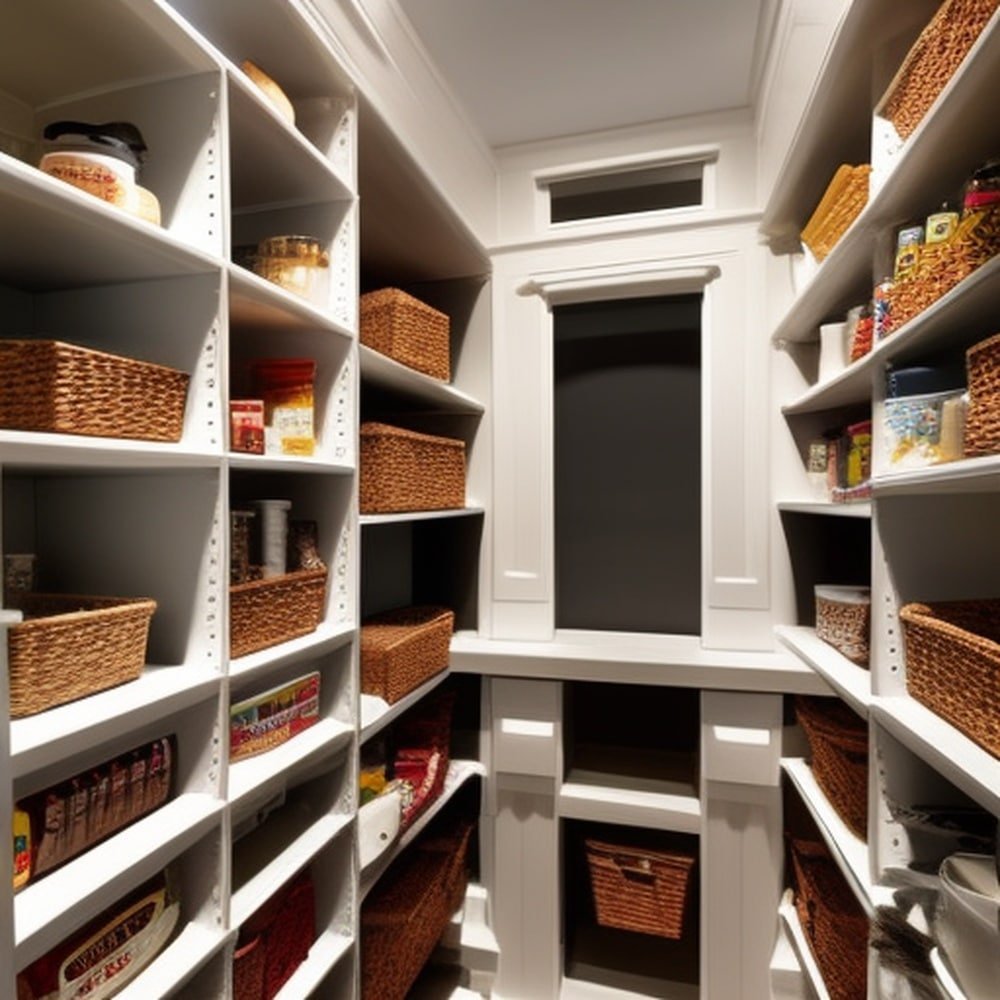
Organizing your larder is an essential part of maximizing its storage capacity. There are many useful ideas that can help you maximize the space, such as storing all of your canned goods and dry goods in the same area. Furthermore, labeling each shelf or drawer and grouping items according to use can also be extremely beneficial and make the process of restocking and reorganizing much simpler. Additionally, designing the shelves with a few sliding baskets or drawers can make access and organization a much easier task.
Opt for Pull-out Drawers at the Larder

Organizing your kitchen storage spaces can be difficult, but it’s worth the effort. One way to maximize space in a small area is by using drawers and shelves; they are perfect for storing dishes, cutlery, and cereal (especially if you live without an oven!) The best place of all? A cold shelf made from marble/granite keeps items cool while preserving their moisture levels so that vitamins remain untouched!
How do you make a cold larder?
Remove any carpets or wood floors that might retain heat to keep things cool and stable inside the home. A door can also help maintain an optimal temperature level for your house by limiting ventilation outside it during hot summer days when you’re not using this space! If possible, use stone walls with no insulation on them because they will radiate away moisture more easily than other materials, like a brick would if left exposed to direct sunlight all day long without proper protection against extreme temperatures.
What should be in a larder?
A larder is a place where food such as butter, milk, and meats are stored to last longer. It has been used for centuries in cool areas like cellars or pantries that have lower temperatures than other parts of your home because it’s best when kept in these conditions!
The traditional way of preserving these products involved keeping them at low temperatures – usually below 40 degrees Fahrenheit (4 C). If you’re not sure if your refrigerator can maintain proper conditions inside, then take out some items before freezing; if there are no problems with its cooling system, then placing packages close together will do the trick but make sure they don’t come into contact because wet surfaces may cause chilling effects which result from condensation between two objects placed.
How cold should a larder be?
Internal temperatures in a larder fridge should be between 1°C and 4° C (33° F – 40° F) to prevent foodborne illnesses. The ideal temperature for storing your groceries is 2 degrees Celsius, which will slow down the growth of bacteria that causes sicknesses like salmonella infection!
What is the difference between a larder and a pantry?
Larders are cool, dry areas that can store different types of food, while pantries often serve as small rooms or cupboards. Larders and pantries have different purposes, but both can be used for storing food. The temperature in larders tends to stay cool enough that it doesn’t spoil easily; however, due to their proximity with other items like alcohol or dairy products, they may emit aromatic smells, which might irritate some people’s senses if the location is not well-ventilated outside of natural ventilation systems within buildings themselves.
This problem often gets worse as time goes on because these chemicals take longer than regular air does decay over long periods, so there will eventually come a point when even breathing deeply causes discomfort instead of giving off an aroma.
The temperature is less regulated in these locations, so it’s important to keep your perishable items safe from spoilage by making sure they stay at an appropriate level with consistent conditions like humidity levels.
A larder is a refrigerator used for storing meat products; however, you may also find them located next door near the kitchen sink! A closet-like space equipped only slightly better than average (compared side by its size), this area will provide all necessary amenities – both practicalities related, such as storage cabinets stocked full up on canned goods.
What is a wet larder?
The wet larder was a place where all uncooked meats (poultry, game, fish, etc.) were kept. Sometimes it’s an inner compartment of your kitchen and accessed through the pantry (a room just outside). The accommodations for these foods were done by using bearers to hold them up high enough so they wouldn’t spoil easily while also having overhead sliding hooks that would catch what you wanted off of lower shelves if need be!
What is a dry larder?
The pantry of old is not at all like the modern-day larder. It was where grains, dried fruits, and cooked pastries were stored, among other things, that would have been available to help sustain life in times before refrigeration or freezer technology became widespread–even some types of hard cheeses!
How do you arrange a larder cupboard?
When re-stocking your cupboard, put tins in rows from front to back with labels facing forwards so you can see what’s available without rummaging at the backs. New packages go towards one side of each row as they’re used up; dates are recycled accordingly, which helps keep things organized!
What makes a good larder?
Grocery shopping is a pain in the neck when you have to dig through everything just for what you need. But with clever storage ideas like roll-out shelving and door-mounted racks, your larder will be so organized that it’ll make perfect sense why everyone loves coming over!
How do you make a larder room?
Everything from cupboards and drawers for storing storage containers or boxes up on shelves that are perfect for larders. Bi-fold doors will give enough room inside while still being compact when closed; pull-out drawer sets offer great accessibility without compromising style points by having them standing proud as some other designs do – no one likes seeing empty corners where something could easily fit unnoticed amongst.
How big should a larder be?
The perfect larder should be at least 4 feet wide and long, but if you have the space, it will make sense for them to go even bigger – like 8′ by 10′. The average size of most homes’ cabinets is 5×5, so this is something that many people will need help with when designing their storage areas in order not only to store food properly but also to utilize every last inch available!
Are larder cupboards worth it?
Yes, they are definitely worth it! Larder cupboards are the perfect compromise for modern living. They don’t require additional space but can still provide ample storage to meet even your largest family’s needs without taking up an entire room in the house! A larder cabinet not only offers practicality and design appeal, but it also adds beauty when you’re cooking or preparing food with friends around this classic piece of equipment at home – especially if they have children who will be dashing back into their rooms once everyone has eaten before heading off again on another adventure throughout the time spent together as new memories form while making dinner.
What do you put in a pull-out larder?
The shelves are perfect for storing all your food items, and the anti-slip coating keeps them in place. If you have bottles or other liquids that need to stay upright, this is a great place! There’s also space inside where utensils can be stored too – so no more messy cupboards anymore with these handy pull-out drawers.
What is a larder box?
A larder box is a large wooden container made to store perishable goods. It’s not just for the food! You can also craft items such as cured meat and dried apple slices in your kitchen with the help of this handy device.
Why is it called a larder?
When you think of old-fashioned English food, what comes to mind? Maybe sausages or hams. But during the 18th century in England, there was another type of larding. It’s where raw meat would be preserved by being covered with fat and then storing it until needed—a way for people without refrigeration (or who did not know how) could enjoy fresh meat despite their lack of resources! The word “larder” came from this practice; now, we use them both interchangeably but at different times depending on the need.
How do you keep a larder cool?
To keep your larder cooler, you can drill holes in the foundation to allow cool air in and warm air out. Additionally, install hit-and-miss vents for further ventilation before placing one or two shelves with stone slabs over them. Doing this will ensure that your food remains chilled at all times!
How wide is a larder cupboard?
From 30cm (1 ft) wide up to 100 cm (3 ft) with heights between 150-229 centimeters (5 – 7.5 ft including legs), larders are not only to save space but also to make it easier on whatever cooking duties come along next – no more running around town trying to find something big enough when we know exactly where everything goes.
What is cold larder?
The cold larder is a must for any well-stocked kitchen. This room stores raw and cooked perishable foods – you’ll find meat preparation begun before being sauteed or fried up on the stovetop!
Is a refrigerator a larder?
Unlike regular fridges that feature an ice box for storing frozen items, larder fridges provide extra space for chilled products and are more energy-efficient. With a larder fridge, you can enjoy all the cold storage capabilities of a traditional refrigerator without the added cost or bulkiness.
What is the difference between a pantry and a larder?
A pantry is a small room or closet used for storing non-perishable food items, such as canned goods, pasta, and baking supplies. A larder, on the other hand, is a cool, dry storage area designed to preserve perishable food items like meat, dairy, and vegetables. While both serve the purpose of food storage, the main difference lies in the types of food they store and the conditions required for preservation.
How do you lay out a larder?
To lay out a larder effectively, consider the following steps:
- Choose a cool, dry, and well-ventilated location, away from direct sunlight and heat sources.
- Install sturdy shelving at various heights to accommodate different-sized items.
- Use clear, airtight containers for storing dry goods to maintain freshness and prevent pests.
- Allocate designated areas for specific food categories, such as meats, dairy, fruits, and vegetables.
- Label shelves or containers for easy identification and organization.
- Regularly rotate items based on expiration dates to minimize waste.
What is the difference between a larder and Garde Manger?
A larder is a cool, dry storage area used for preserving perishable food items in a residential setting. Garde Manger, which translates to “keeper of the food,” is a term used in professional kitchens to describe both the cold food preparation area and the chef responsible for creating cold dishes, such as salads, charcuterie, and hors d’oeuvres. While both involve food storage and preservation, the key difference lies in their respective settings and functions.
Does a larder need ventilation?
Yes, a larder requires proper ventilation to maintain a cool and dry environment suitable for preserving perishable food items. Adequate airflow helps regulate the temperature and humidity levels, preventing the growth of mold and bacteria. Ventilation can be achieved through vents, windows, or air bricks.
What is a basic larder?
A basic larder refers to a simple, well-organized storage area designed to preserve perishable food items. It typically contains essential ingredients and staples used in everyday cooking, such as fresh produce, dairy products, meats, and dry goods like pasta, rice, and flour. A basic larder should be cool, dry, and well-ventilated to maintain the freshness and quality of the stored food items.
What do British people call a pantry?
British people generally refer to a pantry as a small room or closet used for storing non-perishable food items and household supplies. However, the term “larder” is also commonly used in the UK to describe a cool, dry storage area for perishable food items.
How were larders kept cool?
Historically, larders were kept cool by being built on the north side of a house, away from direct sunlight. They often had thick walls, small windows, and ventilation systems to maintain a lower temperature and proper airflow. In some cases, larders also featured marble or slate shelves, which helped keep the space cool and provided a hygienic surface for food storage.
What is an English larder?
An English larder is similar to a traditional larder, serving as a cool, dry storage area for preserving perishable food items. Commonly found in British households, an English larder typically contains essential ingredients and staples used in everyday cooking, including fresh produce, dairy products, meats, and dry goods.
What is a Butler’s larder?
A Butler’s larder is a specialized storage area, usually located near the dining room, where a butler would store and prepare items such as silverware, glassware, linens, and serving dishes. This type of larder is typically found in large, historic homes and serves the primary purpose of facilitating the butler’s duties in setting the table and serving meals.
How do you make a larder?
To create a larder, first, choose a cool, dry and dark place in your home. This could be a dedicated pantry, a cabinet, or even a basement. Next, install shelves or racks to maximize storage space. Ensure that the area is well ventilated to prevent moisture build-up. Once your space is ready, stock it with essential items such as canned goods, grains, spices, and other non-perishable food items. Organize these items by type for easy access.
What is a larder?
A larder is a cool area in a house or an outbuilding used for storing food prior to use. Traditionally, it was a room or large cupboard where meat and other provisions were stored. It’s similar to a pantry, but is typically cooler, making it ideal for preserving certain types of food like meat, dairy products, and vegetables.
What do Americans call a larder?
In American English, a larder is typically referred to as a pantry. However, there can be slight differences between the two. While both are used for food storage, a pantry is often dry and at room temperature, while a larder is typically cooler and can be used for storing perishables.
What does larder mean on a menu?
When you see ‘larder’ on a menu, it usually refers to house-made items that have been preserved or stored for future use. This could include things like pickles, jams, cured meats, and cheeses. These items are often made in-house and stored in the restaurant’s larder, reflecting the establishment’s commitment to freshness and quality.

Experienced Executive Assistant with a demonstrated history of working within the furniture industry. Skilled in furniture styling, visual communication, project management, and proficiency with Adobe Creative Suite. Strong arts and design professional with a (BA) Creative Direction for furniture design focused on Industrial Design from School of the Art Institute of Chicago.
![How To Organize A Walk-In Pantry [With 15 Great Ideas!]](https://bienalclosets.com/wp-content/uploads/2022/01/pexels-rachel-claire-5490824-1-scaled.jpg)


